Table of Contents
Unsurprisingly, your diet, paired with medical treatment, plays a crucial role in healing from a brain injury.
Nutritional intervention can facilitate healing of the damage caused by traumatic brain injury (TBI) and prevent further damage from occurring. Studies show that lifestyle and diet greatly impact overall health and the ability to heal from injuries, so we’re going to present the best food for brain recovery. A healthy diet and exercise also act as a defense mechanism, protecting you from illness while speeding up recovery (2).
This article will help you discover the most nutritious foods to add to your diet to boost recovery and foods you should avoid when healing from a traumatic brain injury.
10 best foods for brain recovery
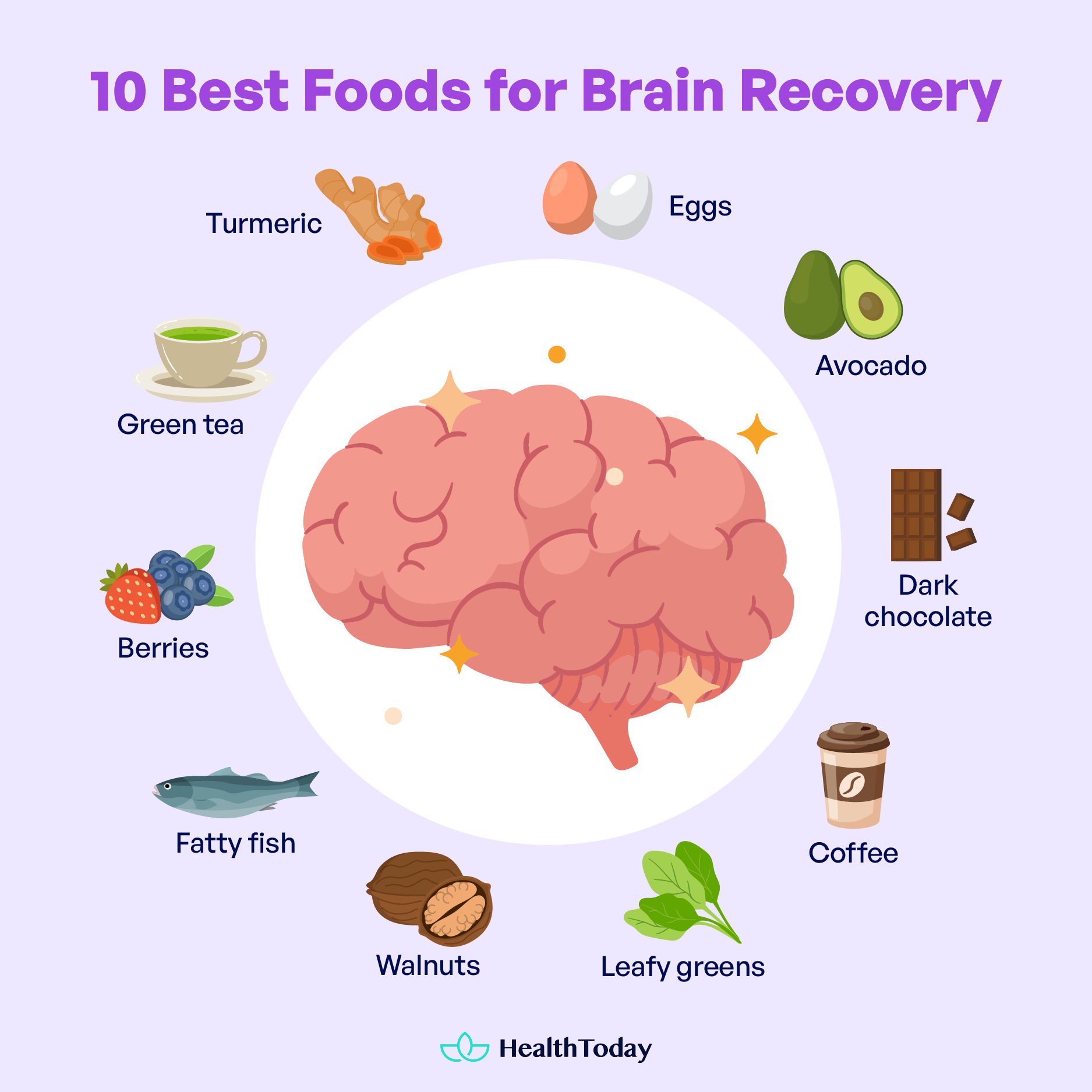
A healthy diet filled with whole foods will contribute to your best health. When it comes to healing from a brain injury, there are certain foods that you should add to your daily routine.
Turmeric
Curcumin, a polyphenol that is the active ingredient of turmeric, has a range of neuroprotective properties that promote healing from brain injury. Its anti-inflammatory and antioxidant properties improve mental function (6), strengthen cognitive function, and protect the synaptic system. This is important because the synaptic neural network helps maintain plasticity that allows the brain to adapt and heal after injury. Curcumin also helps to reduce swelling from TBI (8).
Lastly, studies in rats have also proven that turmeric assists in healing after an injury by preventing damage to the blood-brain barrier. This barrier is important as it keeps harmful substances from reaching the brain (7). However, more studies on humans are needed to confirm this benefit.
Green tea
A study done on rodents showed green tea reduces mental decline while potentially reversing some of the worsening effects of aging. One of the flavonoids contained in the tea, GT-catechin, an antioxidant, can also reduce cell damage, aiding overall recovery. This antioxidant has also been shown to protect against memory loss and oxidative stress (9). However, more studies on humans are needed to confirm these effects.
Berries
Known for their antioxidant properties, berries can protect against neural damage while improving cognitive functions (10).

Fatty Fish
Fatty fish contains omega-3 fatty acids that help repair brain circuits while preventing mental decline. Omega-3s can protect against reduced plasticity, oxidative damage, and cognitive impairments and normalize brain-derived neurotrophic factor (BNDF) levels–all of which are evident in TBI (11).
Stable BNDF levels contribute to protecting B Cells from fatigue that could cause neurodegenerative diseases like Parkinson’s disease, Alzheimer’s disease, multiple sclerosis, and Huntington’s disease (12).
Omega-3 fatty acids also contain docosahexaenoic acid (DHA), which helps cells communicate with one another while strengthening cell membranes during the healing process (13).
Walnuts
The omega-3 fatty acids in walnuts are a great way to add healthy fats and proteins. These nuts also contain melatonin, folate, and vitamin E, which have also been shown to support brain health (14).
Leafy greens
Leafy greens such as spinach and kale contain protective nutrients, such as folate, that play a significant role in brain cell health. In addition to maintaining homocysteine levels, folate is involved in serotonin neurotransmission, which has implications for those with TBI. Folate also promotes brain health by decreasing inflammation symptoms of TBI. (15).
Coffee
The caffeine in coffee has been shown to protect the brain against damage, trauma, and mental decline (16, 17). A study done in mice with brain injuries showed that when treated with caffeine, water levels in the brains of these mice were reduced, leading to lower inflammation. The caffeine also contributed to lower levels of glutamate, a stimulating neurotransmitter that plays a role in regulating memory, mood control, and cognition. The suppression of the excitatory neurotransmitter combined with caffeine’s anti-inflammatory properties led to better recovery (18, 19). However, more studies need to be done on humans to confirm these effects.
Dark Chocolate
Not just a sweet treat, the flavonoids in dark chocolate can help fight mental decline with their antioxidant and anti-inflammatory properties. Dark chocolate has also been shown to have neuroprotective properties (20).
Avocado
The monounsaturated fats in avocados have the greatest healing properties. These fats provide you with antioxidant and anti-inflammatory properties that are crucial when managing a brain injury (21).
Eggs
Eggs contain compounds such as choline, which is important for accelerating the creation and release of acetylcholine. Acetylcholine is a key neural player in memory storage and muscle control. Human and animal studies have also shown the compound to have neuroprotective properties that can help during the recovery from TBI (22).





Five best brain-boosting recipes
Download recipes in PDF to access them whenever you like!
1. Oven-baked salmon with sweet potato and broccoli
- 3 tablespoons low-fat mayonnaise
- 1 teaspoon chili powder
- 2 medium sweet potatoes, peeled and cut into 1-inch cubes
- 4 teaspoons olive oil, divided
- ½ teaspoon salt, divided
- ¼ teaspoon ground pepper, divided
- 4 cups broccoli florets (8 oz.; 1 medium crown)
- 1 ¼ pounds salmon filet, cut into 4 portions
- 2 limes, 1 zested and juiced, 1 cut into wedges for serving
- ¼ cup crumbled feta or cotija cheese
- ½ cup chopped fresh cilantro
Directions:
- Preheat your oven to 218 degrees Celsius. Line a baking tray with foil and spray with cooking spray.
- Combine mayonnaise and chili powder in a small bowl.
- Coat the sweet potato with 2 teaspoons oil, 1/4 teaspoon salt, and 1/8 teaspoon pepper.
- Roast on a baking tray for 15 minutes.
- Coat the broccoli with the remaining 2 teaspoons oil, 1/4 teaspoon salt, and 1/8 teaspoon pepper.
- Remove the sweet potato from the oven after 15 minutes and move it to one side of the pan.
- Place the salmon in the center of the pan and surround it with the broccoli and sweet potato.
- Apply 2 tablespoons of the mayonnaise mixture to your salmon.
- Bake for about 15 minutes until the salmon is tender, and the sweet potato and broccoli are cooked.
- When serving the salmon, top with cheese and cilantro.
- Add lime zest and lime juice to the rest of your mayonnaise mixture and drizzle over your cooked vegetables.
2. Avocado toast
- 1 avocado peeled and pitted
- 2 tablespoons chopped cilantro
- Juice of 1/2 lime
- 1/2 teaspoon red pepper flakes, optional
- Salt & pepper to taste
- 2 slices whole grain bread or bread of choice
- 2 eggs, fried, scrambled, or poached, optional
Directions:
- Toast 2 slices of bread until golden brown.
- In a bowl, mash avocado and combine with cilantro, lime, salt, and pepper.
- Prepare the eggs in your favorite style.
- Spread avocado on crispy toast and top with eggs and red pepper flakes if you desire.
3. Brain boosting smoothie
- ½ cup fresh spinach, chopped into small pieces
- ½ cup fresh kale, chopped into small pieces
- 1 orange, peeled and halved
- ½ cup frozen raspberries
- 1 small banana
- ½ cup chopped carrot
- 1 tablespoon of hemp or chia seeds
- 1 teaspoon turmeric
- 1 teaspoon vanilla
- 1/2 cup water or ice
Directions: Add all ingredients to a blender and blend until desired consistency is reached.
4. Banana cinnamon oatmeal
- 1 cup rolled oats
- 2 cups plain, unsweetened almond or other milk preference
- 1 medium banana mashed
- 1/2 teaspoon vanilla extract
- 1/2 teaspoon ground cinnamon
- pinch of salt
Directions:
- Combine all the ingredients and cook on medium heat until it reaches your desired consistency.
- Remove from heat and serve.
- You can also add fresh bananas and berries to your oats.
5. Beetroot, mandarin, and farro salad
- 2 pounds small beets, trimmed
- 1 ¼ cups water
- ½ cup semi-pearled farro
- 2 tablespoons red wine vinegar
- ½ medium shallot, finely chopped
- 1 ½ teaspoons honey
- ¾ teaspoon Dijon mustard
- ¾ teaspoon fresh thyme leaves
- ¼ teaspoon salt
- 6 tablespoons extra-virgin olive oil
- 2 cups baby arugula
- ½ cup rinsed no-salt-added canned chickpeas
- 3 tablespoons chopped fresh parsley
- 3 mandarin oranges, segmented
- ¼ cup crumbled feta cheese
Directions:
- Preheat your oven to 200 degrees Celsius.
- On a baking sheet, place the beets in the center of a foil packet. Bake until the beets are tender.
- Cook the farro in water on the stove for about 25 – 35 minutes until tender; drain.
- Mix vinegar, shallot, honey, mustard, thyme, and salt in a bowl. Slowly whisk in oil.
- Add chickpeas, arugula, parsley, farro, and roasted beets to this mixture and toss to coat.
- Top your salad with mandarin orange and feta.





What foods to avoid after brain injury?
When it comes to healing from a brain injury, some foods are best to avoid. A study showed that rats with diets high in refined sugar and saturated fats lead to poor cognitive activity that can even worsen the effects of a brain injury. This occurs by reducing the brain’s plasticity lowering its ability to heal while also increasing cognitive dysfunction (23). However, more studies on humans are needed to confirm these effects.
How can foods help heal brain damage?
One of the main ways food protects and helps your brain recover is through strengthening the synaptic network. The synaptic network promotes communication between the brain and the body. The flexibility (plasticity) of this network allows chemical and physical brain changes to compensate for injury to help with healing (3, 4).
Causes and symptoms of a brain injury
The brain is a complex organ with vast implications for health and well-being. While the brain is adaptable to change, it is also greatly susceptible to insult. TBI refers to damage to the brain caused by an impact or sudden movement that causes the brain to twist or bounce inside the skull. This movement can cause physical or chemical changes to the brain, resulting in mild to severe symptoms.
Brain injuries cause extensive damage that can lead to chemical changes in brain cells. Some symptoms of a brain injury include loss of consciousness, dizziness, changes in behavior, and blurred vision (1). Changes in thinking can also be observed in those sustaining brain injuries.





Can a damaged brain repair itself?
Yes. Neuroplasticity is one of the main features of the central nervous system that contributes to healing a brain injury. This feature allows your brain to adapt after an injury, putting measures in place to help heal itself on both physical and chemical levels (24).
What are the best foods for brain fog?
The Mediterranean diet is thought to have great benefits regarding mental well-being. This varied diet consists of many nutrient-dense whole foods, including fresh fruits, veggies, and legumes, while having sufficient amounts of proteins, omega-3s, and complex carbs. While controversial, caffeine has been shown in small doses to provide mental alertness, improve focus, and contribute to slowing cognitive decline (25).
Which vitamin heals the brain?
Vitamin E, found in foods like red bell peppers, leafy greens, beets, and sunflower seeds, has been shown in rat studies to reduce the effect of brain damage after an injury. It was also shown to improve mental function and decrease inflammation (26).
However, more studies on humans are needed to confirm these benefits.
Summary
When it comes to healing from injuries, your body is well-equipped for a speedy recovery. However, knowing what to eat and avoid can make your journey much easier.
Eating the right foods aids your body’s natural mechanisms to heal from injuries while contributing to better overall health and well-being. A healthy diet and lifestyle will have you looking and feeling your best, keeping you mentally sharp and physically strong while combating the effects of inflammation and aging.





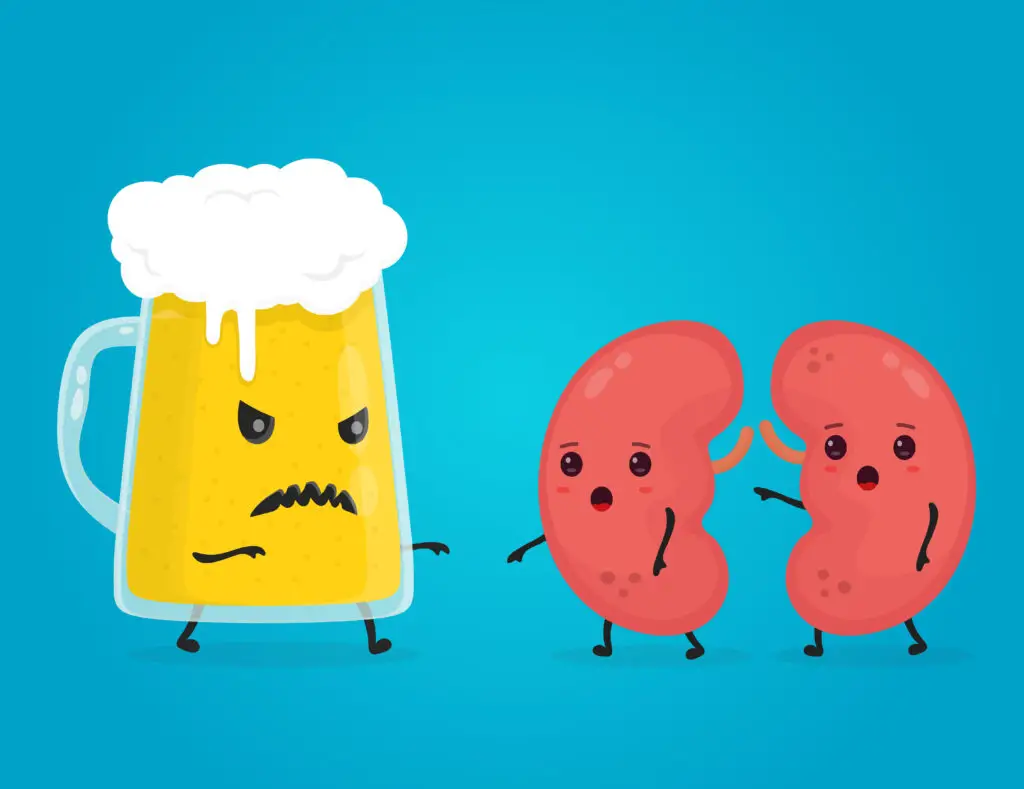



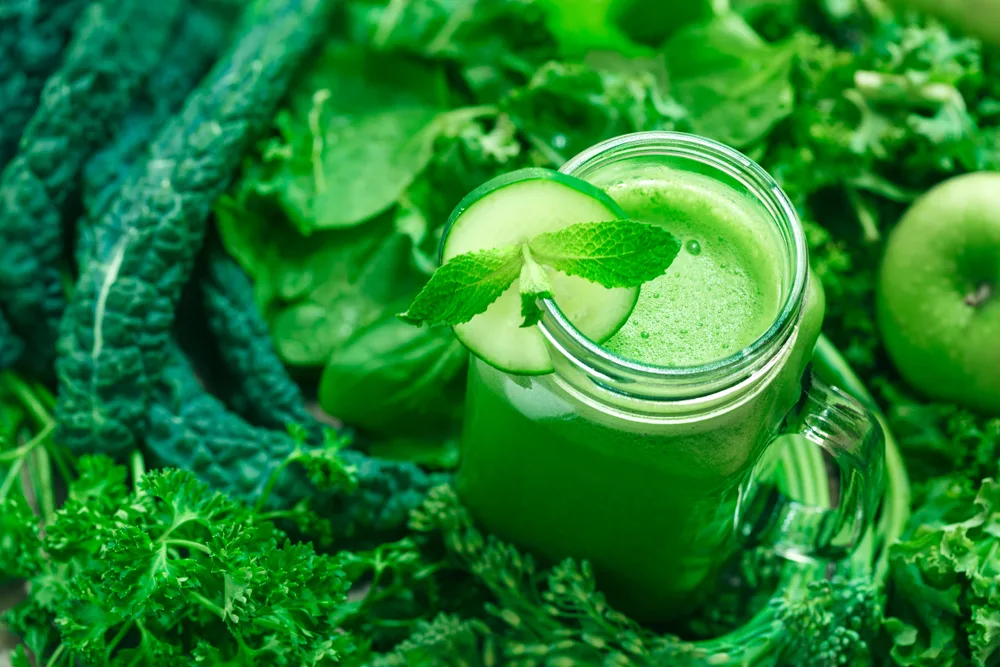


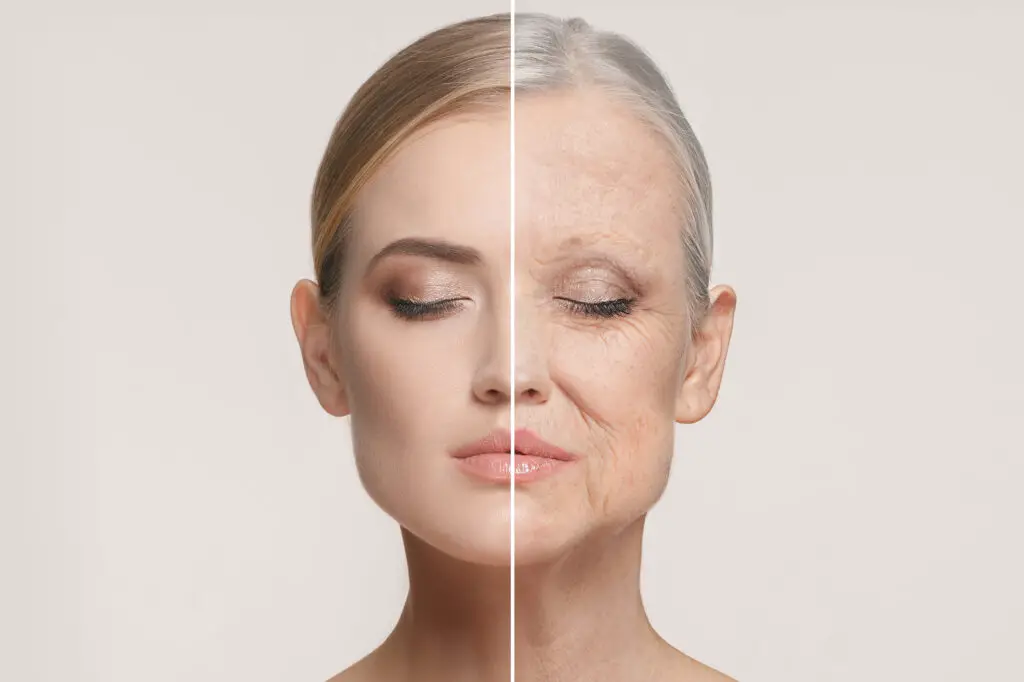



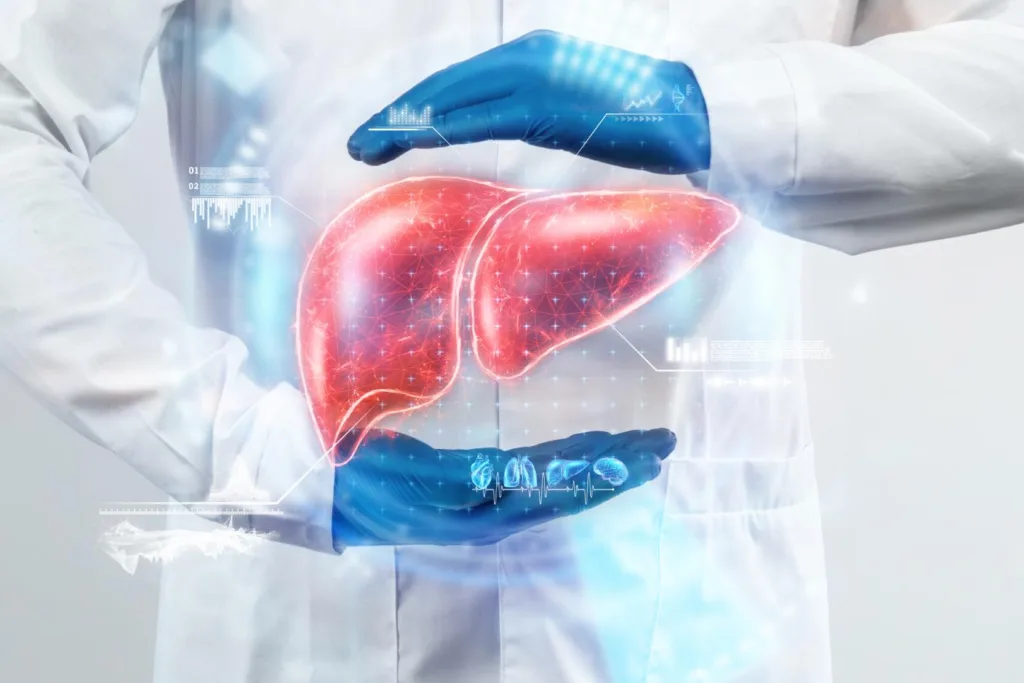
Comments
0